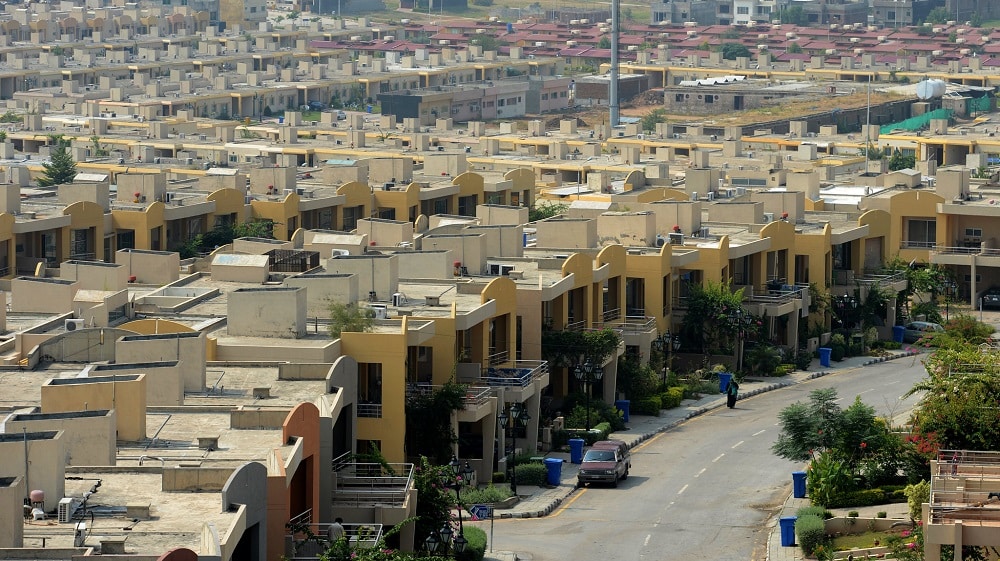The 2024-25 federal budget is expected to have a mixed impact on the construction sector.
According to a report by JS Global, measures such as revisions in property tax rates – with higher taxes for non-filers, an increase in FED for cements (upward revision of Rs. 50/bag), would increase cost pressures and/or demand.
The FY25 Budget saw an all-time high Public Sector Development Program (PSDP) allocation alongside much-awaited Sales Tax re-alignment.
Federal PSDP allocation has been set at Rs. 1,400 billion, marking a 112 percent percent increase over the revised FY24 estimate. However, the figure is met with skepticism, as historical trends suggest that actual disbursement in FY25 will likely fall significantly short of the target due to fiscal consolidation efforts.
New property tax rates and Cement FED were highlights
Proposed changes in tax rates for property transactions introduce progressive rates based on three categories: filers, late filers, and non-filers. Filers benefit from lower rates, ranging from 3 percent to 4 percent on purchases and sales, while non-filers face substantially higher rates, up to 20 percent on purchases and 10 percent on sales.
Additionally, a flat 15% tax on gains from property disposal for filers and progressive rates for non-filers are proposed. In the cement sector, the Federal Excise Duty (FED) has been increased from Rs. 100/bag to Rs. 150/bag, likely resulting in a price hike of approximately Rs. 50/bag + Rs. ~10/bag (covering for sales tax impact).
Steel Sector Welcomes Sales Tax Changes for Tribal Areas
The sales tax exemption for supplies and imports in former tribal areas is set to expire on June 30, 2024, which began six years ago. This exemption currently applies to supplies meant for consumption within tribal areas (FATA/PATA). imports of plant, machinery, and equipment for installation in these areas, imports of industrial inputs by industries located in tribal areas, and supplies of electricity to all residential and commercial consumers within these regions, and led to a competitive advantage for steel makers of this region, compared to players in the rest of the country.
For perspective, the tribal area is estimated to have an installed steel capacity of 800,000-1,000,000 tons, which is 17-22 percent of the total annual demand and the potential demand that may move back to remaining players of the country, once there is a lower tax benefit left for FATA/PATA players.
The recently proposed bill seeks to levy a sales tax on these supplies in a phased manner, with a rate of 6 percent from July 1, 2024, to June 30, 2025, and increasing to 12 percent from July 1, 2025, to June 30, 2026 – albeit still lower than 18 percent GST applicable on rest of the players in the country.
In addition to the gradual shift towards a level playing field, this step will also help in addressing issues like fake invoices. One view is that the actual quantity of dumped steel from tribal areas is lower, possibly under 10 percent of the total steel sales mix.
However, fake invoices were said to be prevalent, and this move will help curb that issue. According to JS Global, this is a step in the right direction, but its impact is limited in the near term. What the sector needs is increased construction sector activities to drive sustainable growth and profitability in the sector.
Outlook – Maintain overweight stance on the Cement Sector
The report maintains an overweight stance on the cement sector due to durable long-term fundamentals and attractive valuations – despite a conservative demand outlook. where the base case incorporates a prolonged period of weak demand.
Sticky from a margin perspective, softer international raw material prices post the recent decline, and anticipated relative savings in finance cost with ongoing monetary easing, would also support the bottom line.
The post New Property Taxes in Budget to Increase Cost Pressures on Construction Sector appeared first on ProPakistani.



